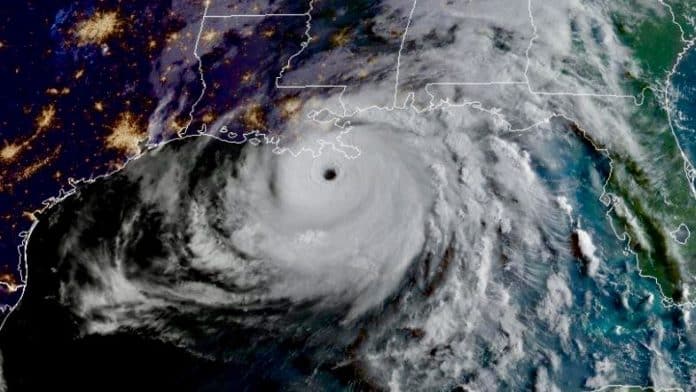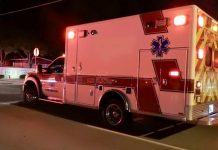
Sept. 2 (UPI) — Severe flooding in New York City after heavy rains from the remnants of Hurricane Ida led to at least 29 deaths throughout the region, authorities said Thursday as floodwaters deluged the city and leaders urged residents to stay inside.
New York City was inundated with rain overnight and caused mass flooding that brought travel above and below ground to a halt.
During a news conference Thursday morning, Mayor Bill de Blasio said Wednesday night’s storm was the city and state’s “biggest wake-up call” to climate change.
The mayor and Gov. Kathy Hochul said that while record rainfall was a cause of the death of nine people in the city alone, residents should expect more storms like that to come with the city planning accordingly.
De Blasio said rapid rainfall stunned residents with flash floods and water that covered streets and filled basement apartments so quickly that first responders performed vehicle rescues throughout the night.
De Blasio said that “hundreds of lives” were saved through the quick action of police officers, firefighters and other first responders in rescue efforts.
Hochul said 3.5 inches of rain fell on Central Park in 1 hour, beating a record established last week during Tropical Storm Henri. Central Park took in 7.19 inches through the evening.
She said because of the impact of climate change, planning must first take place to anticipate such storms happening more frequently in New York City and other locations throughout the state and then make infrastructure changes to mitigate the damage those storms will cause in the future.
“We haven’t experienced this before but we should expect it the next time,” Hochul said. “That means we have to continue to invest in infrastructure and working in partnership with our federal government.”
Hochul, who earlier this week addressed an electrical outage on New York subway on Sunday, said the system continues to be a lifeline for many New Yorkers. She cited flooding issues regarding the subway system as a high priority.
“We have to take care of the drainage shortcomings in our streets,” Hochul said. “If the streets get flooded, what happens next? The water rushes down not only to our highways but finds a way to penetrate our subway system. Trains have been shut down and people stranded. The fear they must have experienced I can’t imagine. I don’t want this to happen again.”
Authorities said in an update late Thursday morning that at least 29 people have died due to the flooding, including a toddler in New York, New Jersey and eastern Pennsylvania.
The victims ranged in age from 2 to 86, authorities said.
Hochul, New Jersey Gov. Phil Murphy and de Blasio all declared states of emergency as the National Weather Service issued a smattering of flash flood warnings for New York and southern New England.
“We’re enduring a historic weather event tonight with record-breaking rain across the city, brutal flooding and dangerous conditions on our roads,” de Blasio said via Twitter. “Please stay off the streets tonight and let our first responders and emergency services get their work done.”
Don’t drive and stay off subway trains, he urged, as videos and images published online show subways and streets flooded.
Early Thursday, the city’s official emergency notification system issued a travel ban until 5 a.m., stating “all non-emergency vehicles must be off NYC streets and highways.”
“If you’re not inside, get inside,” de Blasio said.
The Metropolitan Transportation Authority told residents that services were extremely limited though not suspended due to flooding and that they “strongly recommended” the public avoid traveling.
“If you’re on a train that’s stuck, stay on that train,” it said via Twitter. “The safest place to be is on the train unless you hear otherwise from the conductor.”
Janno Lieber, acting chairman and chief executive of MTA, said rescue crews and first responders were working to evacuate those tapped on train cars.
“We will be deploying maximum pump capacity and surging workers into the system when it’s safe so that as this epic storm abates service can be restored as soon as possible,” he said calling the deluge “historic.”
“Torrential rains caused massive amounts of water to enter subways and flood roads, creating severe disruptions to service,” he said in a statement.
Lora said early Thursday that he’d ordered the evacuation of its downtown area ahead of high tide at 5 a.m., which was expected to see the Passaic River flood nearby homes.
“I would be perfectly fine with being wrong in the morning; what I wouldn’t be fine with is allowing residents to stay in areas where they’re going to end up flooded,” he said in a Facebook Live post with the river behind him.
Lora confirmed that at least one person died, but said he’d received unconfirmed reports of other deaths.
In Queens, the New York Fire Department said a 48-year-old woman died at a flooded Grand Central Parkway residence.
On Wednesday, the National Weather Service issued a flash flood emergency for New York, Brooklyn and Queens.
“This is the first time we’ve ever had to issue one,” it said on Twitter.
Meanwhile, Newark Liberty Airport said early Thursday that it had resumed limited flight operations after suspending travel as they were “experiencing severe flooding due to tonight’s storm.”
At LaGuardia Airport, operators said the weather had caused flight disruptions. In New Jersey, all public transit with the exception of the Atlantic City Rail Line and Amtrak rail service were also suspended.
In Gloucester County in southern New Jersey, officials said a tornado touched down and “severely damaged” multiple houses. No deaths were reported, but two people were injured and in stable condition at a local hospital.
John Dominy, the mayor of the Gloucester County borough of Wenonah, said residents have suffered “significant property damage” following the tornado.
Early Thursday, more than 73,000 customers in New Jersey, nearly 72,000 in Pennsylvania and 50,000 in New York were without electricity, according to poweroutage.us.
The storm hit the northeast as a post-tropical cyclone on Wednesday after making landfall in Louisiana as a Category 4 hurricane on Sunday.





